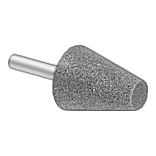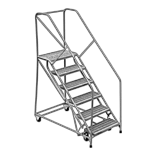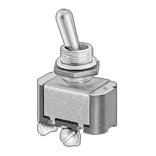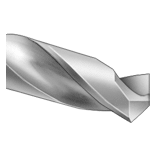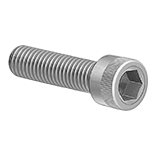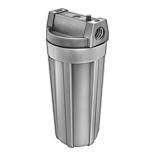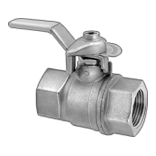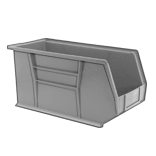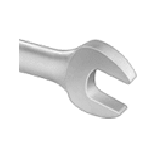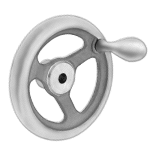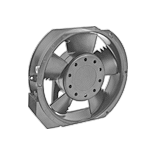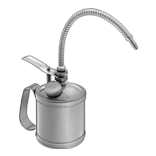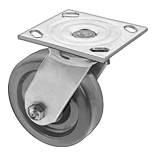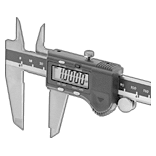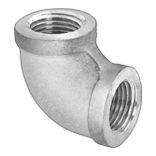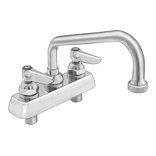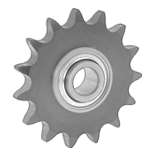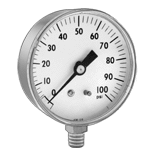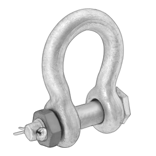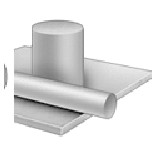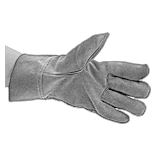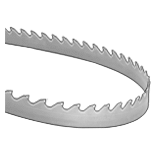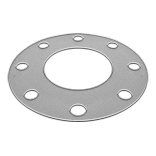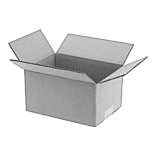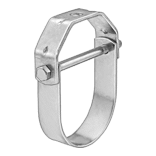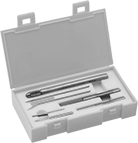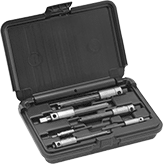Filter by
System of Measurement
Thread Size
Sold As
For Tap Size
For Tap Type
Thread Direction
Tap Sizes Included
Thread Type
Thread Length
DFARS Specialty Metals
Export Control Classification Number (ECCN)
Shank Type
Flute Type
Drill Out Tap Extractor Sets for Screw Thread Taps
No. of Pieces | Includes | For Tap Size | Overall Lg. | OD | Material | Container Type | Each | ||
|---|---|---|---|---|---|---|---|---|---|
| 7 | Four Tap Extractors, Pin Vise, Two Picks | No. 4, No. 5, No. 6, No. 8, No. 10, No. 12, 1/4", 5/16", 3/8", 7/16", 1/2", M3, M3.5, M4, M5, M6, M7, M8, M10, M12 | 1 1/4" 1 1/2" 2" 2 1/2" | 1/8" 5/64" 3/16" 1/4" | Carbide | Plastic Case | 0000000 | 0000000 |
Tap Extractor Sets for Screw Thread Taps
No. of Pieces | For Three-Flute Tap Size | For Four-Flute Tap Size | Material | Container Type | For Number of Tap Flutes | Each | ||
|---|---|---|---|---|---|---|---|---|
| 6 | — | No. 10, No. 12, No. 14, 3/16", 7/32", 1/4", 9/32", 5/16", 11/32", 3/8", 7/16", 15/32", 1/2", M4.5, M5, M5.5, M6, M6.3, M7, M8, M9, M10, M11, M12, M12.5 | Steel | Plastic Case | 4 | 00000000 | 0000000 | |
| 6 | — | No. 14, 1/4", 9/32", 5/16", 11/32", 3/8", 7/16", 15/32", 1/2", 9/16", 5/8", M6, M6.3, M7, M8, M9, M10, M11, M12, M12.5, M14, M16 | Steel | Plastic Case | 4 | 00000000 | 000000 | |
| 6 | — | 5/16", 11/32", 3/8", 7/16", 15/32", 1/2", 9/16", 5/8", M7, M8, M9, M10, M11, M12, M12.5, M14, M16 | Steel | Plastic Case | 4 | 00000000 | 000000 | |
| 13 | No. 4, No. 5, No. 6, 1/8", M3, M3.5 | No. 8, No. 10, No. 12, No. 14, 3/16", 7/32", 1/4", 9/32", 5/16", 11/32", 3/8", 7/16", 15/32", 1/2", 9/16", 5/8", 11/16", 3/4", M4, M4.5, M5, M5.5, M6, M6.3, M7, M8, M9, M10, M11, M12, M12.5, M14, M16, M18, M19, M20 | Steel | Plastic Case | 3, 4 | 00000000 | 000000 | |
| 15 | No. 4, No. 5, No. 6, 1/8", M3, M3.5 | No. 8, No. 10, No. 12, No. 14, 3/16", 7/32", 1/4", 9/32", 5/16", 11/32", 3/8", 7/16", 15/32", 1/2", 9/16", 5/8", 11/16", 3/4", 13/16", 7/8", 15/16", 1", M2, M4, M4.5, M5, M5.5, M6, M6.3, M7, M8, M9, M10, M11, M12, M12.5, M14, M16, M18, M19, M20, M22, M24, M25 | Steel | Plastic Case | 3, 4 | 00000000 | 000000 |
Taps
Drill Out Tap Extractors for Screw Thread Taps
Tap Extractors for Screw Thread Taps
Left-Hand Thread Tap Sets
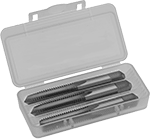 |
High-Speed Steel—Single Thread Size Sets
Taper Chamfer, Plug Chamfer, Bottoming Chamfer | |||||||||||||||||||||||||||||||||||||||||||||||||||||||||||||||||||||||||||||||||||||||||||||||||||
|---|---|---|---|---|---|---|---|---|---|---|---|---|---|---|---|---|---|---|---|---|---|---|---|---|---|---|---|---|---|---|---|---|---|---|---|---|---|---|---|---|---|---|---|---|---|---|---|---|---|---|---|---|---|---|---|---|---|---|---|---|---|---|---|---|---|---|---|---|---|---|---|---|---|---|---|---|---|---|---|---|---|---|---|---|---|---|---|---|---|---|---|---|---|---|---|---|---|---|---|
No. of Pieces | Thread Size | Thread Type | No. of Flutes | Shank Type | Each | ||||||||||||||||||||||||||||||||||||||||||||||||||||||||||||||||||||||||||||||||||||||||||||||
Uncoated | |||||||||||||||||||||||||||||||||||||||||||||||||||||||||||||||||||||||||||||||||||||||||||||||||||
| 3 | 5/16"-20 | UNS | 4 | Square | 00000000 | 0000000 | |||||||||||||||||||||||||||||||||||||||||||||||||||||||||||||||||||||||||||||||||||||||||||||
